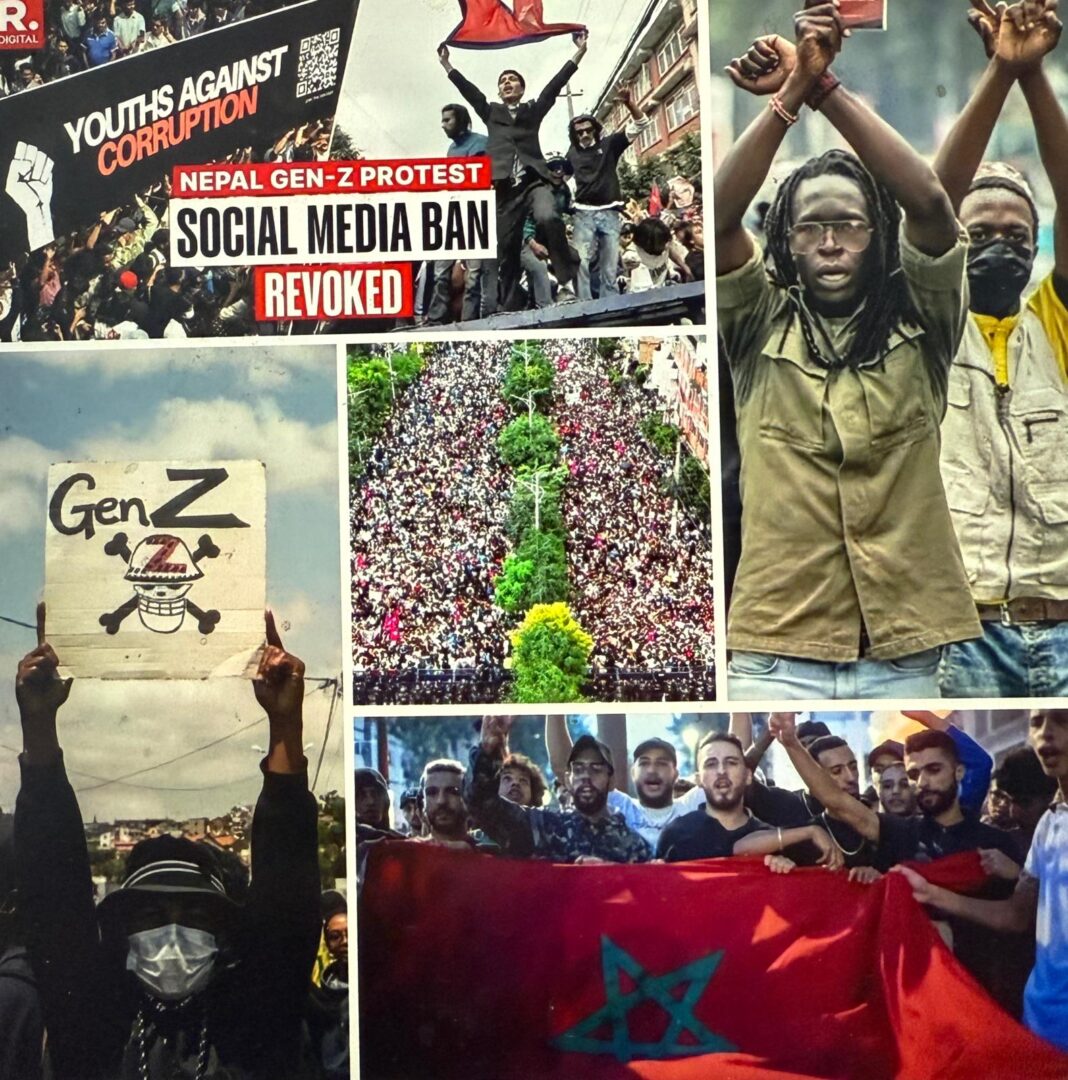By Ahmed Fathi

New York: I’ve spent years observing protests up close—from Tahrir Square to Times Square—and after a while, you start to recognize the choreography. Workers strike. Students rally. Parties move in. Leaders rise, get arrested, or cut a deal. Then comes exhaustion, silence, and eventually, another round. Gen Z
But something has shifted. The rhythm is off. The new generation—Gen Z—has rewritten the protest playbook entirely. Their movements erupt faster, spread wider, and vanish before the state can catch its breath.
They’re not building revolutions. They’re debugging systems.
The Pattern You Can’t Ignore
What began in isolated places now looks like a global echo. In Nepal, young people defied a government social media ban and toppled a prime minister. In Morocco, GenZ 212 organized online rallies against inequality and crumbling healthcare. Madagascar’s youth wrapped their outrage in anime imagery to protest power cuts. In Kenya, a TikTok-born tax rebellion forced the government to retreat.
Different countries. Same anger. Same tempo.
I’ve spent enough time researching these uprisings to see a pattern forming—and the repetition is too precise to ignore. Each follows a near-identical timeline: digital spark, viral outrage, decentralized mobilization, public pressure, and government panic.
It feels organic. It also feels… engineered.
The Suspicion in the Signal
As a journalist and researcher, I’ve learned to question what spreads too fast, too cleanly. And here’s what’s unsettling: along with genuine voices, there’s an entire ecosystem of online pages, influencers, and “activist” sites pushing narratives in sync—sometimes within minutes of each other.
Some are grassroots, yes. But others? They’re murkier—amplified by anonymous accounts, coordinated hashtags, and professional-grade video edits appearing within hours. Governments call it manipulation. Activists call it digital strategy. The truth, as usual, lives somewhere in the tension between both.
This doesn’t discredit the anger on the streets. If anything, it shows how information warfare has fused with civic mobilization. Gen Z’s protests are not just political—they’re algorithmic. The line between real outrage and orchestrated noise is getting harder to see—and those in power can feel that uncertainty creeping in.
The Operating System of Dissent
At the heart of it, three traits define this generation’s movements:
- Decentralization. No figurehead, no hierarchy, no easy arrests. These are movements built like networks, not pyramids.
- Meme-ification. Where older activists carried manifestos, Gen Z carries humor and irony. A TikTok remix can move people faster than a political speech ever could.
- Speed. A private Discord chat at midnight becomes a nationwide protest by dawn. Governments, designed for bureaucracy, are now forced to fight velocity.
Yet beneath all the memes and hashtags lies real despair—economic paralysis, corrupt elites, and the bitter awareness that someone their age, somewhere else, lives better simply because they were born on the right side of the border.
Explainer created Notebook LM
The Catch
Their power is agility. Their weakness is sustainability. A movement without structure can light up the world for a moment—headlines, hashtags, hope—and then fade just as quickly. When there’s no organization to hold it together, even the biggest victory can slip through the cracks and dissolve into confusion.
And with AI surveillance and digital infiltration on the rise, the state is evolving too.
But still—they persist. Over and over, across continents, the same pattern repeats. And every time, the governments act surprised, as if the timeline hasn’t already been written.
The Bigger Picture
To dismiss Gen Z as naïve would be a mistake. They’re not idealists shouting slogans. They’re pragmatists asking why nothing works. They don’t want to inherit broken institutions—they want to debug them in real time.
We also have to keep our eyes open. Not every trending protest is what it seems. Some movements catch fire because people are genuinely angry; others because someone, somewhere, wanted them to burn.
The explosion of activist websites, anonymous “organizers,” and influencer-activists makes it harder to know what’s authentic and what’s been engineered. The internet gives everyone a megaphone—but it also distorts the sound.
Yet even if some sparks are engineered, the fire itself is real—and it’s spreading.
The Warning to Power
Governments can still ban apps, censor platforms, and jail users. But they can’t stop a generation that was raised on connectivity from finding new ways to connect.
Gen Z isn’t waiting for permission to lead. They’re already leading—by destabilizing the illusion of stability.
They are not the leaders of tomorrow. They are the shareholders of today’s crises, and they’ve already convened their emergency board meeting in the streets.
This isn’t chaos. It’s the future, beta-testing itself in real time.
And if you think these protests are just noise—wait for the next update.
About the Author: Ahmed Fathi is a United Nations Correspondent, Global Affairs Analyst, and Managing Editor of American Television News (ATN).


